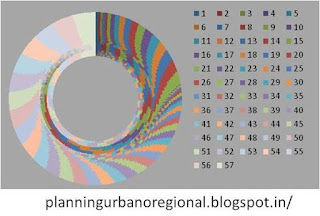One education does not suit all.
We have created a template of education system based on our own idea of what an ideal educational curriculum and growth path should be and we want everyone belonging to different economic strata of society to follow the same path. Whether they are kids of millionaires or underprivileged children they are supposed to go through the same education structure. This phenomenon of standardization is more visible at elementary and secondary education level. Sheer number of children to be educated makes an excuse for standardization of education.
What makes us think that educational needs of poor underprivileged segment is same as prosperous segment of society, while their priorities and their skill needs are way different from each other. Their average educational lifespan might significantly differ; they might need a different curriculum, different educational structure and different style of teaching. Are we trying to pave a path for children of a incredibly poor migrated family living in squatter of city up to the graduation and post graduation and doctorate level, can he or she afford to invest so much of their life time earning education while their parents are struggling for their livelihood throughout their life and searching for a descent place which they can call home? Isn’t it that the educational needs of these special kids are way different from the middle and higher income segment of society? Don’t they need a kind of education which will allow and help them earn some money to fulfill their personal needs and help sustain and support their family while they are getting educated? This is something which standard education system fails to provide. School’s prime focus has remained on providing knowledge while what these marginalized kids need is skills which they can immediately put into practice and help uplift their socio-economic profile, they can’t wait to get a job or start their own business till they graduate from an engineering college. They have to act now to get out of that mess; they can peruse their education at any point later in life in their area of interest to further enhance their skills.
Talking of middle class segment, look at the majority of first-generation entrepreneurs who choose to become an entrepreneur due to increasingly tempting business opportunities of modern world and technological advancements in-spite of any family history of business or entrepreneurship, but majority of them are apparently lost or clueless about how to move forward. What an irony, throughout the education ladder these kids were prepared for corporate job and they choose to become entrepreneur and found themselves struggling and lost in the big business world, dominated by family business houses, whether a business house of a small shopkeeper or empire of well known business family. Take a case of any city in India, majority of middle segment business owners have only basic elementary education from generations to generations, and they are surprisingly doing well, they didn’t feel the need of further formal education so they voluntarily dropped out from the school, their parents taught them the skills they needed to run the business, they inherited the knowledge which was needed to run the show. They would have never learned these skills in the schools with present education structure, because present education system doesn’t treat them as a special niche group at elementary and secondary education level who need customized education. Hence the first generation entrepreneurs feel lost while business houses run their business smoothly.
Imagine the growth potential of individual and communities with the targeted education, imaging the growth potential of a kid who gets targeted training in his family business (whether its pottery, metal works, furnishing or anything else, at elementary to secondary education level which he is witnessing through generations, and compare it with the collective loss of potential due to flat “good for all” education structure. Loss seems to be monumental. It’s time that the fundamental structure of education need to be revived and should become increasingly skill oriented starting right from the elementary level.








